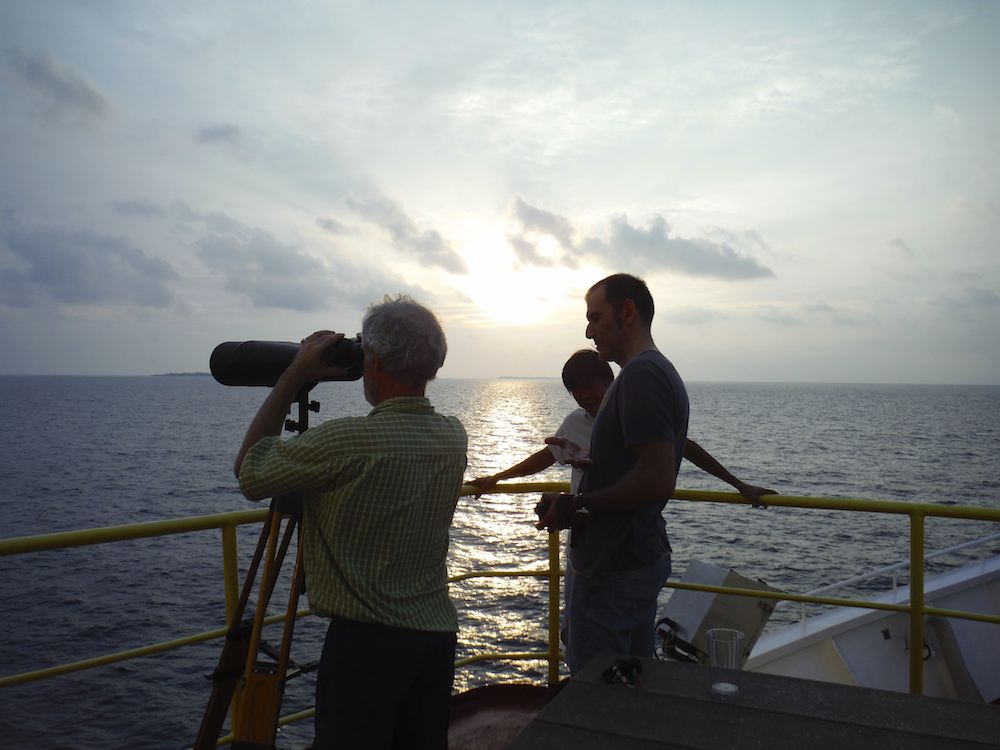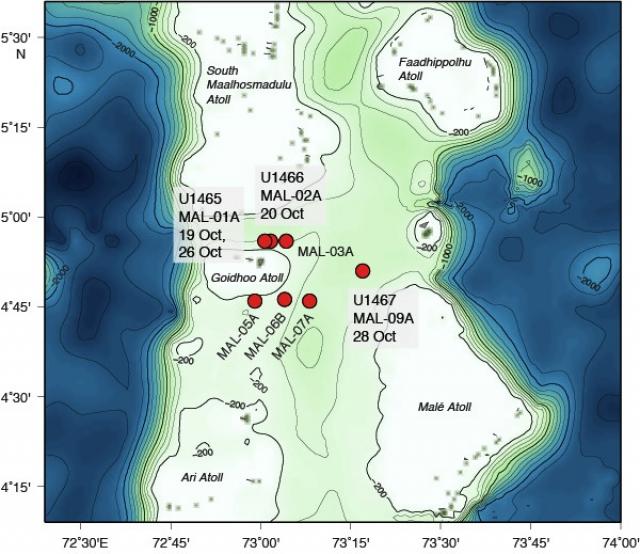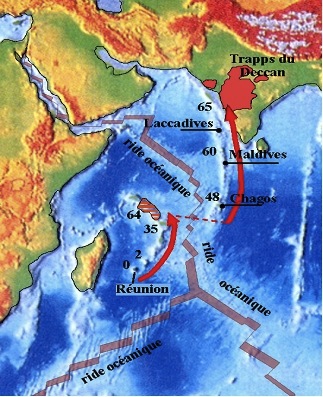
Exp359. Mer des Maldives: sous les coraux le basalte !
Since the 18th October, JOIDES has been conducting this drilling series in the Maldives inland sea, which should enable researchers to describe and understand part of Maldives’ “recent” geological and environmental history (about 15 million years ago Ma) backwards).

The islands of the Maldives and their magnificent corals have a volcanic base that bears witness to the activity of a hot spot millions of years ago.
They are indeed on the ride that connects the province of Deccan in India to … the island of Reunion.
You said hot spot?
And yes!
The hot spot (rising molten magmatic material) that is currently fueling the volcanic activity of Reunion Island has been responsible for the formation of the Deccan Trapps (a vast massif of volcanic terrain) in India (about 65 Ma behind) and Of a succession of islands, volcanic at first!
There are 65 Ma Indian Plate was at the current Reunion level.

The opening of the Indian Ocean about 165 Ma has led to the relocation of India to the north and the islands of the Laccadives (60Ma), the Maldives (48Ma), the Chagos Islands 35 Ma), the Mascarene (30 Ma), Mauritius (15 Ma) and finally Reunion (5 Ma to present).
The Maldives formed by the operation of the hot spot were driven by the movement of the plate on which they are located and were no longer “fed” by the hot spot: the volcanoes were extinguished. Their evolution over millions of years has allowed the establishment of the fantastic coral ecosystems that characterize them now.
Today the researchers of JOIDES are there to reconstitute their climate 15 to 5 Ma and to bring elements of understanding of the consequences of the climate changes currently under way.
(For more information: http://www.ipgp.jussieu.fr/fr/ovpf/formation-de-lile < )